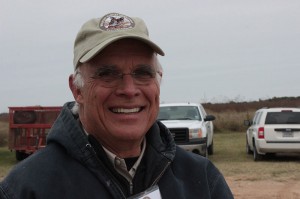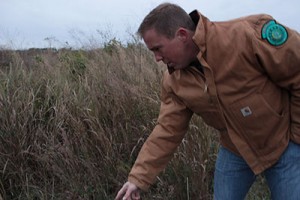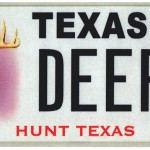Listening For The Call Of The Quail

Dave Fehling/StateImpact Texas
Jim Willis restored his land in Colorado County with native grasses
Helped by $6 million from the State of Texas, prairies west of Houston are being restored with native grasses to increase the population of Bob White Quail.
There’s something missing these days around ranches and farms just west of Houston: the unmistakable call of the Bob White Quail.
“Everybody knows that sound, “said Robert Perez, a game bird specialist with Texas Parks and Wildlife.
He does a great imitation of the Bob White Quail whistle which you can hear by clicking below.
“That sound has become something folks don’t hear as much. We’ve seen massive declines,” Perez told StateImpact Texas.
Why are there fewer quail these days?
Perez says a big factor is how the landscape has changed: prairies were once covered with native grasses that were clumpy, providing nests for baby quail. Over the decades, cattle ranchers replaced those grasses with grasses like Bermuda from Africa that were better for the cattle but terrible for the quail.
So now, the challenge has become finding ways for the cattle and the quail to co-exist. Last year, the Texas legislature provided $6 million to save the quail. The funds are helping the state’s wildlife experts to work with ranchers in focus areas like one 60 miles west of Houston.

Dave Fehling
Jon Hayes, Texas Parks and Wildlife Department, in a prairie restored with native grasses
To learn how it’s working out, Jon Hayes, a prairie conservationist with Texas Parks and Wildlife, took us along to do a quail count. Before sunrise, a dozen of his colleagues scattered across the prairies near Sealy last week. They did the count — not by sight — but by sound.
“It’s a little early. They’ll be calling in the next ten minutes or so. They just call once. All the coveys in the area will let out this call and you’ll get a good estimate of how many coveys are out there,” Hayes said as he and a colleague looked out across a field that had been restored with native grasses.
The call they listened for was not the “Bob White” mating call but rather a more subtle warbling, a kind of a wake-up call quail use. After a few more minutes of waiting, they heard the first call. Then another. And another. You can listen to them in our radio story.
The three calls likely came from three different coveys. The numbers will be loaded into a database that will help the state determine how the save-the-quail effort is working. In an email from Hayes a few days after the count, he told News 88.7 that past “counts” are showing twice as many calls in areas where there have been native grass restoration projects.
One place where they’re hearing the difference is on the land of Jim Willis who moved from Houston to Colorado County.
“And when I moved there you couldn’t hear a quail anywhere,” said Willis.
But over a span of five years, he planted his prairieland with native grasses. And then, he started talking up his neighbors, getting them to do the same on their ranches. They now they have a wildlife corridor, about as wide as a football field and seven miles long.
“I can sit on my front porch and I can hear quail whistling the traditional Bob White call in every direction. It’s just one after another after another,” said Willis.
